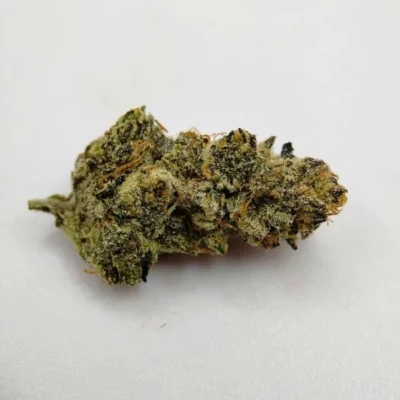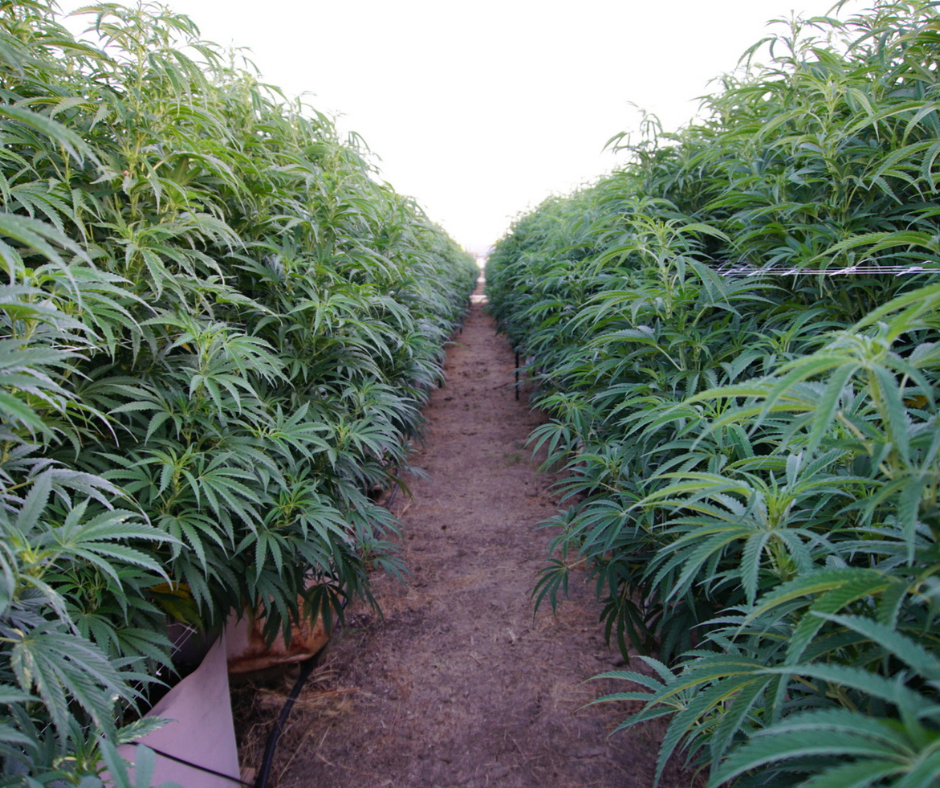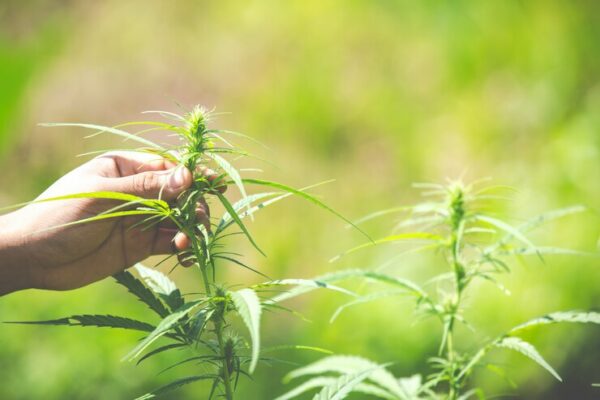Buy Weed Online
The History of Cannabis Cultivation
Discover how the cannabis plant has been cultivated for thousands of years for medicinal, religious, recreational, and commercial uses. Humans have cultivated cannabis for millennia. As long ago as 2,800 BC, cannabis was being used to treat a wide variety of ailments and health problems.
It also found its way into many different religions’ religious ceremonies and practices. It was especially prevalent in the rites and ceremonies of the Hindu religion of India and the pharmacopeia (medicine) of the ancient Chinese. Even the Romans used weed. So let’s take a brief look at the history of cannabis cultivation.
Cannabis cultivation has a rich and diverse history that spans thousands of years and is deeply rooted in various cultures worldwide. From its earliest documented uses in ancient civilizations to its modern-day resurgence, the cultivation of cannabis has evolved significantly, shaping societies, economies, and even political landscapes. In this comprehensive exploration, we delve into the multifaceted journey of cannabis cultivation, tracing its origins, cultural significance, legal implications, and its role in shaping the global cannabis industry.
Origins of Cannabis Cultivation
Cannabis cultivation traces back millennia, deeply rooted in human history. Ancient civilizations across Asia, including China and India, recognized the plant’s multifaceted utility. In China, hemp cultivation for fibre dates back to around 4000 BCE, with its versatile fibres used for textiles, ropes, and paper. Meanwhile, in India, cannabis was celebrated for its medicinal properties and featured prominently in religious rituals and cultural practices.
The spread of cannabis cultivation can be attributed to its adaptability to various climates and soils, enabling it to flourish across different regions. From Asia, cannabis cultivation expanded into the Middle East, Africa, and eventually the Americas. Indigenous cultures in these regions utilized cannabis for medicinal, spiritual, and recreational purposes, weaving it into the fabric of their societies. As trade routes developed, cannabis seeds and knowledge of cultivation techniques traversed continents, contributing to its global dissemination.
In modern times, the origins of cannabis cultivation continue to shape its cultural significance and economic impact. Despite periods of prohibition and stigma, the legacy of ancient cultivation practices endures in contemporary agriculture and horticulture. With evolving attitudes and regulations, the cultivation of cannabis has undergone a resurgence, sparking renewed interest in its historical roots and potential for diverse applications in medicine, industry, and recreation.
Cultural Significance of Cannabis Cultivation
Cannabis cultivation carries immense cultural significance, deeply intertwined with various societies worldwide for centuries. Its cultivation dates back thousands of years, playing roles ranging from spiritual ceremonies to medicinal practices across different cultures. In regions like ancient China and India, cannabis held sacred status, revered for its therapeutic properties and spiritual symbolism. The plant’s cultivation methods often reflect cultural traditions, with unique techniques passed down through generations, shaping community practices and rituals.
Furthermore, cannabis cultivation has been pivotal in shaping cultural movements and identities, particularly in the modern era. From the counterculture movements of the 1960s to the contemporary cannabis legalization efforts, cultivation has been a focal point of social change and activism. The plant’s cultivation has sparked debates on individual freedom, environmental sustainability, and economic development, highlighting its multifaceted cultural significance. In societies where cannabis remains illegal, its cultivation represents resistance against oppressive laws and cultural norms, fostering underground communities and subcultures.
Moreover, cannabis cultivation serves as a symbol of cultural heritage and resilience, especially in indigenous communities. Many indigenous cultures have cultivated cannabis for centuries, incorporating it into traditional practices and ceremonies. For these communities, cannabis cultivation represents economic opportunities and a connection to ancestral knowledge and land stewardship. Despite facing historical marginalization and colonial suppression, indigenous peoples continue to safeguard and celebrate the cultural significance of cannabis cultivation, preserving their traditions for future generations.
Expansion and Globalization of Cannabis Cultivation

The expansion and globalization of cannabis cultivation have surged in recent years, fueled by shifting societal attitudes and evolving legislative landscapes. Once relegated to the fringes of legality, cannabis is now experiencing a renaissance, with countries worldwide reconsidering their stance on its cultivation and consumption. This paradigm shift has paved the way for increased investment and innovation within the industry, spurring technological advancements and novel cultivation methods.
As cannabis cultivation spreads across the globe, diverse climates and agricultural practices come into play, influencing the characteristics and potency of the harvested plant. Each region offers unique opportunities and challenges for growers, from the high-altitude terrains of the Andes to the lush fields of Southeast Asia. Moreover, globalization has facilitated the exchange of expertise and genetic strains, fostering cross-cultural collaborations that enrich the genetic diversity of cannabis varieties worldwide.
However, the expansion of cannabis cultivation also raises pertinent questions regarding sustainability, regulation, and social equity. As the industry burgeons, stakeholders must grapple with environmental impact, equitable access to opportunities, and responsible business practices. Effective regulation becomes paramount to ensure consumer safety, mitigate black market activities, and uphold ethical standards. Balancing the economic potential of cannabis with social responsibility is crucial in navigating the complexities of its global expansion.
What are the basic requirements for growing cannabis?
To cultivate cannabis successfully, several fundamental elements are essential:
- Light is crucial; natural sunlight or artificial grow lights must be provided for optimal photosynthesis and plant development.
- Maintaining the right temperature and humidity levels within the growing environment is vital for healthy growth and preventing mould or pest infestations. Adequate ventilation ensures proper air circulation and CO2 exchange. A nutrient-rich soil or a well-balanced hydroponic system is necessary to supply the plant with essential nutrients throughout its lifecycle.
- Water is vital for hydration and nutrient uptake, so consistent watering practices are imperative for cultivating robust cannabis plants.
Industrial Revolution and Commercialization of Cannabis Cultivation
The Industrial Revolution catalyzed significant changes in agriculture, including cannabis cultivation. As machinery replaced manual labour, efficiency skyrocketed, leading to the commercialization of cannabis production. Technological advancements made large-scale cultivation feasible, shifting cannabis from small-scale farming to industrial agriculture. This transformation increased yields and reduced costs, making cannabis more accessible for various applications.
Moreover, the commercialization of cannabis cultivation spurred innovation in breeding techniques and genetic modification. Breeders could now select desirable traits more efficiently, resulting in specialized strains tailored to medicinal or recreational purposes. This diversification of cannabis varieties expanded its market potential, fueling further investment and research in the industry. Consequently, the commercialization of cannabis cultivation during the Industrial Revolution marked a pivotal moment in its history, shaping its trajectory into a multi-billion-dollar global market.
Furthermore, the integration of cannabis into mainstream commerce brought about legislative and regulatory challenges. Governments worldwide grappled with establishing frameworks to regulate cannabis cultivation, distribution, and consumption while balancing public health and safety concerns. The commercialization of cannabis also prompted debates surrounding legalization, taxation, and social equity. Despite these challenges, the Industrial Revolution laid the foundation for the modern cannabis industry, setting the stage for ongoing innovation, market expansion, and regulatory evolution.
Prohibition and the War on Drugs
“Prohibition and the War on Drugs” is a historical narrative marked by the contentious battle against substance use and abuse. Dating back to the early 20th century, prohibitionist movements aimed to curb the consumption of alcohol, later extending to illicit substances like cannabis. Despite efforts to regulate and criminalize cannabis cultivation, its underground cultivation persisted, fueling a lucrative black market. The War on Drugs, a policy paradigm adopted in the mid-20th century, intensified the crackdown on drug production and distribution, including cannabis cultivation, through punitive measures and law enforcement strategies.
Cannabis cultivation emerged as a focal point within the broader context of prohibitionist policies. The criminalization of cannabis cultivation led to the proliferation of covert operations, often associated with organized crime and violence. Despite stringent regulations, cannabis cultivation persisted, driven by both recreational and medicinal demands. The interplay between prohibition and cannabis cultivation underscored the complexities of drug policy, highlighting the limitations of enforcement-centric approaches in addressing substance-related issues.
In recent years, shifting attitudes and legislative reforms have challenged the traditional framework of prohibition and the War on Drugs. With the legalization of cannabis cultivation in several jurisdictions, policymakers have sought alternative strategies focusing on harm reduction and public health initiatives. This paradigm shift reflects a growing recognition of the failure of punitive measures and the need for evidence-based approaches to drug policy. As societies navigate the complexities of drug regulation, the legacy of prohibition and the War on Drugs serves as a cautionary tale, urging a reevaluation of outdated strategies in favour of more holistic and pragmatic solutions.
Modern-Day Resurgence and Legalization
In recent years, there has been a notable modern-day resurgence and legalization of cannabis cultivation across various regions globally. This shift marks a significant departure from the previous stigma associated with the plant, as societies increasingly recognize its medicinal and economic potential. Governments, spurred by public demand and promising research, are revisiting outdated policies to accommodate the growing acceptance of cannabis cultivation.
Legalizing cannabis cultivation has sparked innovation in agricultural practices and business models. Entrepreneurs and farmers are exploring sustainable cultivation methods and leveraging technology to optimize growth and yield. Additionally, legalization has opened avenues for small-scale growers and large-scale enterprises, fostering a diverse market ecosystem catering to consumer preferences and needs.
Despite its newfound legality in many areas, cannabis cultivation still faces regulatory challenges and social perceptions. Striking a balance between industry growth and responsible usage remains a priority for policymakers. Education campaigns and community engagement initiatives are crucial in debunking myths and promoting informed discourse around cannabis. As the modern-day resurgence of cannabis cultivation continues, navigating these complexities will be essential in shaping a sustainable and inclusive cannabis industry.
Conclusion
The history of cannabis cultivation is a complex tapestry woven with threads of culture, commerce, and controversy. From its ancient origins to its modern-day resurgence, cannabis cultivation has played a central role in shaping human societies and economies around the world. While the journey of cannabis cultivation has been marked by challenges and setbacks, its enduring legacy continues to evolve, paving the way for a more enlightened and inclusive approach to cannabis policy and regulation. As we continue to navigate the ever-changing landscape of cannabis cultivation, it is essential to recognize and honor this extraordinary plant’s rich history and cultural significance.
FAQs
- What is cannabis cultivation? Cannabis cultivation is the practice of growing the cannabis plant for various purposes, including medicinal, recreational, and industrial uses. It involves nurturing the plant from seedling to maturity, employing indoor or outdoor cultivation techniques, hydroponics, and soil-based methods. Cultivators carefully monitor light, humidity, temperature, and nutrient levels to optimize plant growth and yield. Depending on local regulations and personal preferences, cultivators may focus on strains rich in THC, CBD, or other cannabinoids, each with distinct effects and medicinal properties. Cannabis cultivation requires expertise, dedication, and adherence to legal guidelines to ensure the production of high-quality, safe products.
- Is cannabis cultivation legal? As for the current legal landscape, cannabis cultivation legality varies widely across different jurisdictions globally. While some regions have embraced its cultivation for medical and recreational purposes, others strictly prohibit it. In countries like Canada, certain states in the United States, and several European nations, cannabis cultivation is legal under specific regulations and licenses. However, in many other places, including parts of Asia and the Middle East, cultivation remains strictly prohibited, with severe penalties. Thus, whether cannabis cultivation is legal depends significantly on the specific laws and regulations of the respective region, making it imperative for individuals to thoroughly research and understand their local statutes before engaging in such activities.
- What are the basic requirements for growing cannabis? Cannabis plants require suitable environmental conditions, including lighting, temperature, humidity, ventilation, and soil or growing medium. Additionally, growers must provide nutrients, water, and regular care throughout the plant’s life cycle.
- Can cannabis be grown indoors? Yes, cannabis can indeed be cultivated indoors, a practice increasingly popular for its controlled environment and year-round accessibility. Indoor cultivation offers precise control over factors like light, temperature, humidity, and nutrients, which are crucial for optimal growth. Growers can tailor conditions to specific strains by utilizing hydroponics or soil-based systems, enhancing yields and potency. Additionally, indoor setups provide security and discretion, vital in regions with strict regulations or where outdoor cultivation isn’t feasible. While initial investment and operational costs may be higher than outdoor methods, the potential for consistent quality and quantity makes indoor cannabis cultivation a compelling option for enthusiasts and commercial growers.
- What are the different methods of cannabis cultivation? Cannabis cultivation encompasses various methods tailored to suit different environments and desired outcomes. Indoor cultivation, popular for its controlled conditions, employs techniques like hydroponics and soil-based systems under artificial lighting. Outdoor cultivation harnesses natural sunlight, often in soil beds or pots, allowing for larger yields but susceptible to environmental factors. Greenhouse cultivation combines aspects of both, providing controlled environments with natural light. Additionally, guerrilla cultivation involves discreet outdoor planting in remote areas. Each method requires distinct considerations for space, resources, climate, and legal regulations, offering cultivators diverse options to suit their preferences and constraints.
- How long does it take to grow cannabis? The time it takes to grow cannabis varies depending on several factors, such as strain, growing method, and environmental conditions. Generally, cannabis plants go through distinct growth stages: germination, seedling, vegetative, flowering, and harvesting. The process typically spans 3 to 5 months from germination to harvest, though some strains mature faster or slower. Indoor cultivation with controlled environments tends to offer faster growth rates than outdoor growing due to optimized conditions, while auto-flowering strains can shorten the cycle by skipping the need for a change in the light cycle to initiate flowering. Successful cultivation demands patience, careful monitoring, and adherence to proper growing techniques to achieve optimal yields.
- What are the most important factors for maximizing cannabis yield? Maximizing cannabis yield involves a multifaceted approach encompassing various factors crucial for successful cultivation. Firstly, selecting the right strain tailored to environmental conditions and grower expertise is paramount. Adequate natural or artificial lighting is pivotal in photosynthesis and overall plant health. Nutrient balance, including nitrogen, phosphorus, and potassium, must be carefully managed throughout growth. Maintaining optimal temperature and humidity levels within the grow space also fosters vigorous plant growth and prevents stress-related issues. Prudent pruning techniques, proper watering, and vigilant pest management maximize yield potential, culminating in a bountiful cannabis harvest.
- What pests and diseases commonly affect cannabis plants? Cannabis plants can be susceptible to pests such as aphids, spider mites, thrips, and whiteflies, as well as diseases like powdery mildew, botrytis (bud rot), and root rot. Preventative measures such as proper sanitation, pest management, and environmental controls can help minimize these issues.
- How do I harvest and cure cannabis buds? Cannabis buds are typically harvested when the trichomes (resin glands) peak potency, indicated by changes in colour and maturity. After harvesting, buds are trimmed of excess leaves and then dried slowly in a controlled environment to preserve potency and flavour.
- Is it legal to sell cannabis grown at home? The legality of selling homegrown cannabis varies by jurisdiction. In some places, it’s legal to sell small amounts to licensed dispensaries or individuals, while in others, selling any amount of cannabis without proper licensing is illegal. It’s important to research and understand the laws in your area before selling any cannabis products.
All views expressed here are from a third-party source and do not necessarily represent the entity of Buzzed Extracts itself. This blog post is intended to be used for informational purposes only.


